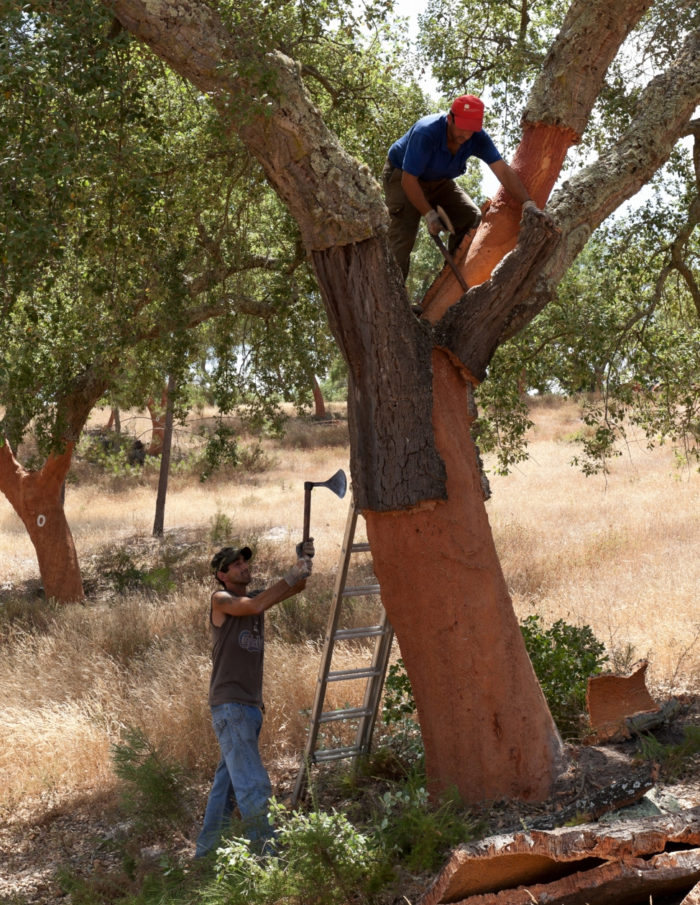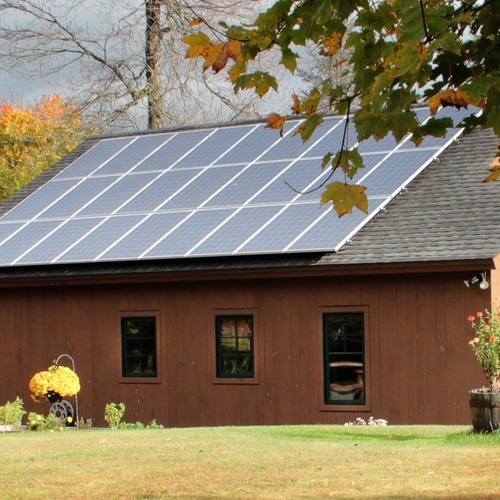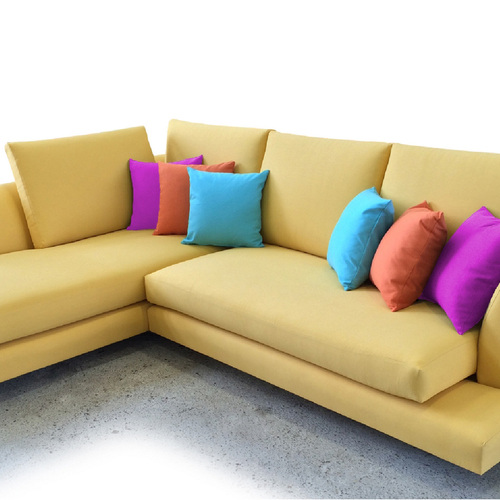
Image Credit: Amorim
Proponents of green building have spent years fighting the impression that sustainable design is all about product selection. It’s difficult to swim upstream against the tide of American consumerism, but it’s important to keep repeating an important truism: green building depends on following an integrated design process, on minimizing the size of the building, and on designing for energy efficiency. You can’t make a bad building green by specifying a few “green” building materials.
That said, green builders are usually curious to see which products have been included in BuildingGreen’s annual “Top-10 Green Building Products” list. Although a few of their chosen products are intended chiefly for commercial construction, residential builders will find products on the list that are worth considering.
Addressing resilience and energy efficiency
“After a year of record droughts and floods across the country, this year’s Top-10 products include several for managing moisture in buildings or for irrigating more responsibly,” says BuildingGreen founder Alex Wilson. “In selecting this year’s products, we looked for companies addressing resilience, energy efficiency, thoughtful use of materials, cutting-edge system optimization, and other needs.”
This year’s selections include software for modeling heat and moisture flows, concrete masonry units with sequestration of carbon dioxide, a low-e coating for windows that opens new possibilities to energy-efficient, passive solar windows, and an LED streetlight meant to deliver 100 lumens per watt to precisely the area where the light is needed.
The BuildingGreen Top-10 Green Building Products for 2013
WUFI software from Fraunhofer IBP and Oak Ridge National Laboratory. Understanding how moisture moves through building assemblies is critical to their long-term durability and performance. But moisture and heat flows are highly complex, and sophisticated software is required to model performance. WUFI (for “Wärme and Feuchte Instationär,” or transient heat and moisture) is a family of PC-based software tools developed by the Fraunhofer Institute for Building Physics in Germany and Oak Ridge National Lab in the U.S.. The software calculates heat and moisture transfer in multi-layer building components exposed to various climate conditions, and has been used in the development of smart vapor retarders.
Atlas CMU block with CarbonCure. The production of portland cement, the main ingredient in concrete, results in approximately 5% of the world’s anthropogenic CO2 emissions. Though concrete sequesters some of that CO2 during curing, primarily on the surface layer, the CarbonCure Block System significantly improves this process by taking CO2 supplied from local industrial sources and injecting it directly into concrete masonry units (CMUs) during production using a specially designed mold. Atlas Block is using the CarbonCure system primarily to reduce the carbon footprint of its products, but injecting CO2 into CMUs during manufacture also improves their strength, reduces the amount of portland cement required, and speeds curing.
Amorim expanded-cork boardstock insulation. Expanded Insulation Cork Board is 100% natural, rigid insulation material produced from natural cork — bark from an oak tree native to the western Mediterranean region. The cork bark can be harvested from mature trees every nine years without damaging the trees. To produce rigid board stock insulation, cork granules are steam-heated in an autoclave, which expands the cork and activates a natural binder, suberin, contained in the cork; additional binders, flame retardants, or other chemicals are not used in production.
GBA readers will remember that Alex Wilson posted a blog about Amorim cork insulation in August 2012. Amorim cork insulation is being distibuted in the U.S. by several distibutors, including Small Planet Workshop in Olympia, Washington.
Proglaze ETA Engineered Transition Assemblies from Tremco Commercial Sealants & Waterproofing. For commercial building applications, Proglaze ETA Engineered Transition Assemblies from Tremco Commercial Sealants & Waterproofing is a complete system comprised of sealants, membranes, primers, and flashings (all its own products) and insulation and sheathings (from other manufacturers) designed to integrate well together. These aluminum and silicone components are designed to bridge between windows and other wall openings and sheet membranes in the field of the assembly. The system is designed to last 50-100 years.
LoE-i89 glazing from Cardinal Glass Industries. Traditionally, there have been two types of low-e coatings: vacuum-deposited (sputtered) “soft-coat” silver layers and pyrolytic “hard-coat” indium tin oxide layers. Soft-coat low-e has to be protected from abrasion or the elements, so is only installed on a protected surface inside an insulating glass unit (IGU). Glass with hard-coat pyrolytic coatings are typically noticeably tinted and have a “pebbly” surface-texture that is hard to clean. A new coating from Cardinal Glass is a sputtered indium tin oxide hard-coat that can be installed on an exposed surface of an IGU. This option allows two low-e coatings to be used on a double-glazed IGU, and it enables a double-glazed window to achieve a level of performance that was previously achievable only with triple-glazing.
Viridian Reclaimed Wood. Huge quantities of wooden pallets, crates, and packing materials used to ship goods to the U.S. are discarded daily, wasting a valuable resource and clogging our landfills. In its Oregon facility, Viridian Reclaimed Wood processes these materials from the Port of Portland and then creates flooring, tabletops, paneling, veneers, and other products for use in commercial and residential buildings.
GeoSpring hybrid electric water heater from GE. The 50-gallon GeoSpring has an energy factor of 2.35 in hybrid mode, and has a first-hour rating of 63 gallons. It offers four operating modes, ranging from all electric-resistance (using two 4,500-watt elements) to all heat-pump operation. Among stand-alone heat-pump water heaters, the GE GeoSpring is the quietest, at just 55dB (though this is still noisier than most refrigerators); the product is American-made in GE’s Louisville, Kentucky factory; and it carries a limited 10-year warranty.
Haiku by Big Ass Fans. Haiku ceiling fans, manufactured by Big Ass Fans, have brushless, electronically commutated DC motors for increased energy efficiency. Designed for both residential and commercial applications, Haiku ceiling fans use 2-30 watts, significantly exceeding Energy Star requirements.
XS-P Series streetlight from Cree Lighting. Cree’s XS-P Series LED street and area light incorporates Cree LED light engines and BetaLED’s NanoOptic Precision Delivery Grid optics to deliver 100 lumens per watt of either 4000K or 5700K light precisely onto the ground where needed.
Cyber Rain irrigation controllers. Cyber Rain systems use local weather data along with plant, sprinkler, soil, slope, and sun exposure data to calculate evapotranspiration (ET) and provide just the right amount of water to maintain the health of different plant species and avoid overwatering. The controllers are linked to “cloud”-based software via the Internet or directly through a USB port, and can be accessed remotely for real-time adjustments using smartphones or other remote devices.
For more information on these products, visit the BuildingGreen website.
Weekly Newsletter
Get building science and energy efficiency advice, plus special offers, in your inbox.














10 Comments
Rodents?
Viridian ... "creates flooring, tabletops, paneling, veneers, and other _rodents_"???
Response to William Li
William,
Thanks for catching the typo! I plead guilty to cut-and-paste journalism. I used information from the BuildingGreen press release. That's where I got the strange reference to rodents. Somehow, the typo slipped through the editing process...
You can still see the typo on the BuildingGreen website.
Interesting stuff. For a great article on cork,
read this piece from Saudi Aramco World:
http://www.saudiaramcoworld.com/issue/201202/the.other.side.of.cork.htm
Response to GordonTaylor
Gordon,
Thanks for the link!
I've been reading Saudi Aramco World -- it used to be called just "Aramco World" -- since 1965. Glad to meet another reader of the magazine. Subscriptions to the paper magazine are free.
i89 glass and condensation issues?
I heard form our local Marvin rep that the i89 was having issues with condensation on the inside surface of the glass- enough to drip down on your new wood window interiors. Anyone else hear this? have they fixed the problem?
Response to Adrienne Burt
Adrienne,
Several comments posted on an earlier blog (Rating Windows for Condensation Resistance ) address your question, but the comments did not reach a definitive conclusion.
In Comment #10 (10/13/2012), Greg Smith wrote, "At the GANA (Glass Association of North America) conference in June, in Minneapolis, Jim Larsen and Tracy Rogers had an interesting debate on the potential for increased condensation when using surface 4 LowE coatings. The gist was that while surface 4 coatings do lower the interior glasss temperature, what is the potential effect on condensation resistance when using them? There was quite a difference of opinion and a lot of charts and graphs."
In response, I posted this comment: "A note to GBA readers about "surface 4 coatings": Greg is referring to a relatively new type of double glazing: one that includes a hard-coat (pyrolitic) low-e coating on surface #4 (that is, the innermost surface of glass facing the interior of the house). The use of a surface 4 coating allows double-glazing to have two low-e coatings, thereby lowering the U-factor of the IGU.
"Somewhat paradoxically (counterintuitively?), a surface 4 coating reflects radiant heat energy back into the room, and IGUs with surface 4 coatings have a colder interior surface than conventional low-e double-glazing without the surface 4 coating. The glazing performs better, but the surface is colder. However, if you are sitting near the window stark naked, the glass will feel warmer (even though it is colder). OK -- enough with the paradoxes.
"IGUs with surface 4 coatings will have a slightly increased risk of condensation compared to other types of double glazing. Will homeowners care? Stay tuned..."
Cardinal Glass - i89 or i81?
Martin,
Looking at the Cardinal Glass website, I didn't find any mention of LoE-i89 glass.
However, I did see a page for LoE-i81 glass (a roomside, or surface four coating for double-panes).
Another typo, or am I missing something?
Thanks.
http://www.cardinalcorp.com/products/coated-glass/loe-i81-glass
An answer to the confusion between i81 and i89
Daniel,
I just spoke with Jim Larsen at Cardinal Glass. Here's the scoop:
1. LoE-i81 and LoE-i89 are different products.
2. Cardinal Glass will be adding information about LoE-i89 to its website soon.
3. LoE-i89 will become more available in 2013 than it is now.
4. LoE-i89 is an enhanced version of LoE-i81. It has 8% more light transmission than LoE-i81, resulting in a higher VT score and a higher SHGC.
Thanks Martin . . .
for your thorough and accurate reporting!
Haiku fan too pricey
I like the looks of the Haiku fan but $825 for the least expensive model is too expensive and they don't even have a model with a light.
Log in or create an account to post a comment.
Sign up Log in